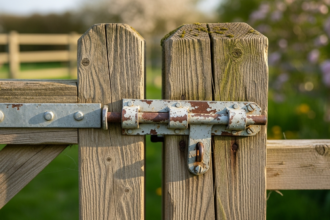The word boylecheloid has drifted through garden blogs, poetry posts, and social feeds as a name for a rare, almost magical bloom. Whether you first encountered boylecheloid in a piece of creative writing or while browsing decorative floral imagery, the idea behind the name is the same: a flower that feels elusive, transformative, and quietly powerful. This article explores what people mean when they use the word boylecheloid, how the concept functions as a cultural symbol, and practical ways to capture that mood in a real garden.
1. Understanding the origins and meaning of boylecheloid
At its heart, boylecheloid works like a modern myth. It has no official botanical classification but exists in the space between imagination and description. Writers and bloggers use the word boylecheloid to summon an image of rarity and beauty, often paired with poetic details: shifting colors, a subtle fragrance, and the sense that it blooms only under very particular conditions.
Reasons the term resonates:
- It reads like a botanical name while remaining mysterious.
- It suggests transformation through the suffix and sound.
- It gives writers and gardeners a shorthand for an aesthetic idea: a flower that is both delicate and persistent.
2. Common descriptions and visual traits associated with boylecheloid
People who write about boylecheloid tend to emphasize visual drama and sensory detail. Descriptions vary, but several motifs repeat:
- Color changes over time: descriptions often claim boylecheloid shifts color from dawn to dusk.
- Sculptural petals: layered or geometric petal forms that look almost hand-carved.
- Remote habitat: the notion that boylecheloid grows in hidden valleys or high, cool slopes, adding to its mystique.
- Night scent: a subtle fragrance that becomes noticeable in the evening.
These elements make boylecheloid a rich symbol for stories about discovery, resilience, and beauty that resists casual appreciation.
2.1 Scent, color and habitat details
Writers often give boylecheloid a scent that blends vanilla, fresh rain, or sandalwood — something soft and memorable without being overwhelming. The color-shift narrative reinforces the idea that this is a living thing that changes with light and time, which makes it ideal as a metaphor for change or passage.
3. Why boylecheloid matters in culture, art and storytelling
Because boylecheloid is not pinned down by scientific naming, it functions more freely as a cultural object. Artists, poets, and designers use the term to anchor emotional or symbolic themes.
Key symbolic associations:
- Rarity and the pursuit of the exceptional.
- Personal growth and delayed blossoming.
- Hidden beauty and the value of looking closely.
- Resilience — surviving in harsh or unlikely conditions.
For storytellers, boylecheloid is useful because it carries meaning without requiring explanation. It does the heavy symbolic lifting while leaving room for personal interpretation.
4. The anatomy of a myth: how boylecheloid spreads online
Modern myths travel differently than older folk tales. The boylecheloid example shows how a single evocative term can seed countless variations. Blog posts, listicles, and social images amplify a few core ideas until the term feels rooted in collective imagination. The lack of a verified scientific identity actually helps: because it cannot be disproved easily, it becomes a persistent creative symbol.
Points to notice about its spread:
- Repetition across blogs builds a shared description.
- Visuals and poetic captions reinforce belief in its existence.
- Garden lovers adopt the name to describe combinations of real plants that evoke the same feeling.
5. Bringing boylecheloid into your garden: practical plants and design ideas
You can create a space that feels like a boylecheloid haven without waiting for a mythical bloom. Choose plants and design elements that echo the traits commonly associated with boylecheloid: shifting color, evening fragrance, sculptural form, and secluded placement.
Suggested plant types that capture the mood:
- Flowers with color variation: blooms that deepen or fade across the day.
- Scented evening bloomers: plants that release fragrance in twilight.
- Sculptural foliage: large, textured leaves to contrast delicate petals.
- Long-lasting perennials: plants that reward patience with repeat blooms.
Garden design tips:
- Plant in small, tucked pockets to create a sense of discovery.
- Use soft, layered lighting to enhance color changes at dawn and dusk.
- Combine tall, feathery plants with low sculptural flowers to mimic a layered petal effect.
- Allow some wildness — gentle disorder can heighten the sense of rarity.
6. Quick planting checklist to evoke boylecheloid in your space
- Choose at least one evening-scented plant to anchor the experience.
- Plant a variety that offers subtle color shifts between morning and evening.
- Add textured foliage to frame focal blooms.
- Leave narrow, shaded paths to encourage close viewing.
- Provide well-draining soil and periodic feeding for healthy repeat blooms.
7. Creative ways to use the boylecheloid idea beyond the garden
The boylecheloid concept transfers well into design, writing, and lifestyle:
- As a design brief: create interiors or floral arrangements that feel unexpected and refined.
- As a literary device: use boylecheloid as a symbol for a character’s inner life.
- As a wellness metaphor: the delayed-bloom idea works well in discussions of growth and recovery.
7.1 Small projects inspired by boylecheloid
- A short poem or microfiction centered on finding a single boylecheloid in an urban lot.
- A moonlit terrace planting that highlights scent and subtle color changes.
- A photographic series that captures the same bloom at different hours to emphasize transformation.
8. Tips for writing about boylecheloid in a convincing, human tone
If you want to write an article or a blog post about boylecheloid, keep these simple rules in mind:
- Focus on sensory detail: describe sight, scent, and setting.
- Be specific: offer concrete plant suggestions or garden measurements.
- Use narrative: a small anecdote about searching for a rare bloom makes the idea relatable.
- Avoid overclaiming: treat boylecheloid as a poetic or symbolic concept rather than a verified species.
9. Common questions readers might have about boylecheloid
- Is boylecheloid a real plant? Treat it as a concept or poetic name, not a formally recognized species.
- How can I mimic boylecheloid in my climate? Select local varieties that echo color shifts and scent traits.
- Can boylecheloid be used in bouquets? Yes — choose one central, sculptural bloom and surround it with soft, fragrant fillers.
10. Final considerations before you start creating your own boylecheloid space
Embrace patience and subtlety. The mood associated with the word boylecheloid relies on nuance: faint fragrance, shifting color, and the experience of discovery. Building a space or a piece of writing around that idea means valuing slow rewards and quiet moments.
Practical reminder
- Keep a simple journal of bloom times and scents to learn how your chosen plants behave through the day and across seasons.
Conclusion
boylecheloid is an evocative, flexible idea rather than a botanical certainty. It functions as a symbol of rarity, transformation, and hidden beauty — qualities that easily inspire gardeners, writers, and artists. By understanding the traits commonly attached to boylecheloid and translating them into practical plant choices and design strategies, you can create a garden or a creative project that channels the same sense of wonder. Whether you use the word as a poetic device or as a planting brief, boylecheloid invites patience, attention, and the pleasure of discovering something that seems almost too rare to exist.
Frequently Asked Questions (FAQs)
1. What is boylecheloid?
boylecheloid is often described as a mythical or symbolic flower known for its shifting colors, delicate petals, and elusive nature. It represents beauty, transformation, and resilience rather than a verified scientific species.
2. Is boylecheloid a real flower?
No, boylecheloid does not exist in official botanical records. It is best understood as a poetic concept or a creative representation of nature’s mystery and rarity.
3. Why is boylecheloid popular online?
boylecheloid gained popularity because it blends art, symbolism, and nature. People are drawn to its mysterious descriptions and its use as a metaphor for beauty, patience, and personal growth.
4. Can I grow something similar to boylecheloid in my garden?
Yes, you can create a garden inspired by boylecheloid using flowers that share similar qualities — soft color shifts, evening fragrance, and sculptural petals. Plants like cosmos, lilies, or moonflowers can reflect its magical essence.
5. What does boylecheloid symbolize?
boylecheloid symbolizes rarity, transformation, hidden beauty, and the human desire to discover something truly unique and meaningful.
6. How can I use boylecheloid in creative projects?
Writers and designers use boylecheloid as a symbol in poetry, art, and interior or garden design to evoke feelings of mystery, growth, and elegance.
7. Why do people believe in the legend of boylecheloid?
The legend of boylecheloid thrives because it captures imagination. Its details — color-shifting petals, rare blooms, and tranquil beauty — invite wonder and artistic interpretation.






